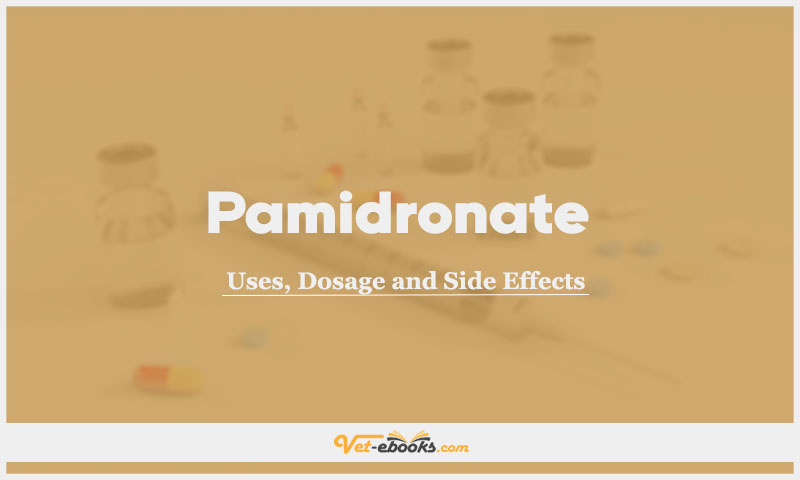Pamidronate In Dogs & Cats: Uses, Dosage and Side Effects

Overview
- Inhibits osteoclast activity and induces osteoclast apoptosis.
Uses of Pamidronate
- Treatment of hypercalcaemia (especially associated with vitamin D toxicosis and hypercalcaemia of malignancy).
- Some studies support the use of pamidronate as an adjunctive analgesic for pain associated with bone tumours in dogs.
- In human medicine, it is also used to treat osteolytic lesions and bone pain due to bone metastases associated with breast cancer, multiple myeloma and Paget’s disease.
Dose of Pamidronate in Dogs and Cats
Dogs:
- 0.65–2 mg/kg (typically 1 mg/kg) i.v. slow infusion with NaCl 0.9% over 2–4 hours can be repeated q28 days if required.
- Some clinicians advocate 0.9% NaCl i.v. for 2 hours before and after the infusion.
- For cholecalciferol-induced toxicosis, give on days 1 and 4 post-ingestion.
Cats:
- 1.0–2.0 mg/kg i.v. slow (over 4 hours) infusion.
Drug Dosage Calculator
You Should Give:
Side Effects of Pamidronate in Dogs and Cats
- Can cause renal toxicity, nausea, diarrhoea, hypocalcaemia, hypophosphataemia, hypomagnesaemia and hypersensitivity reactions.
- In humans, ophthalmic syndromes, bone pain, electrolytes abnormalities, and blood dyscrasias have also been reported.
Contraindications of Pamidronate in Dogs and Cats
- Renal dysfunction.
Some Notes:
- Concurrent use of aminoglycosides may result in severe hypocalcaemia.
- Use with caution with NSAIDs.
Tip
Do You Want To Increase Your Veterinary Knowledge and Practical Skills?
You Can Now Browse and Download +3000 Books For Veterinary Professionals & Students Online.
Download Veterinary Books




















